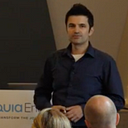In the grand tradition of early 1930s US movie classics, where the unexpected twist was a hallmark of masterful storytelling, I propose a radical reinterpretation of M. Night Shyamalan's "The Sixth Sense." Imagine, if you will, a world where the entire cast, save for Bruce Willis's character, Malcolm Crowe, are the dead. This inversion of the plot twist, reminiscent of the cinematic sleight of hand found in films like "The Cabinet of Dr. Caligari," offers a fresh lens through which to view this beloved thriller.
Consider the eerie atmosphere that permeates the film. The characters' interactions, their movements, their very presence, all seem to be shrouded in a veil of the unknown. It is as if they are trapped in a limbo, unable to move on. This is not just a metaphor; it is a reality. They are the ghosts, lingering in the world of the living, seeking resolution.
The character of Cole Sear, played by Haley Joel Osment, is often seen as the linchpin of the story. His ability to see the dead is central to the plot. But what if Cole is not just a boy with a special gift? What if he is a spirit himself, caught in this realm, unable to find peace? His interactions with Malcolm, the only living character, are a desperate attempt to communicate with the world of the living, to find a way out of this purgatory.
Toni Collette's portrayal of Lynn Sear, Cole's mother, is a masterclass in subtlety. Her character's frustration and desperation are not just the reactions of a concerned parent; they are the manifestations of a spirit trapped in a world she cannot fully engage with. Her inability to connect with her son, her constant feeling of being on the periphery, is the plight of the dead trying to reach out to the living.
The supporting characters, from the troubled Vincent Grey to the enigmatic Mrs. Tunney, all fit into this narrative. They are the remnants of lives unfinished, souls seeking closure. Their stories, their struggles, are the echoes of lives lived and lost, now trapped in this liminal space.
This reinterpretation is not just a wild claim; it is a coherent narrative that aligns with the film's themes of loss, redemption, and the struggle to move on. It is a world where the living and the dead coexist, each unaware of the other's true nature. Malcolm, the only living character, is the catalyst for their resolution. His presence allows them to confront their unfinished business, to find peace and move on.
In this version of "The Sixth Sense," the twist is not just a plot device; it is the very fabric of the story. It is a world where the dead are not just seen; they are the main characters. It is a world where the living are not just the protagonists; they are the anomalies.
What if the dead are not just the ones we see? What if they are the ones we interact with every day, the ones we love and lose? The Sixth Sense, in this light, becomes a haunting exploration of the human condition, a reminder that the line between life and death is far more blurred than we ever imagined.
